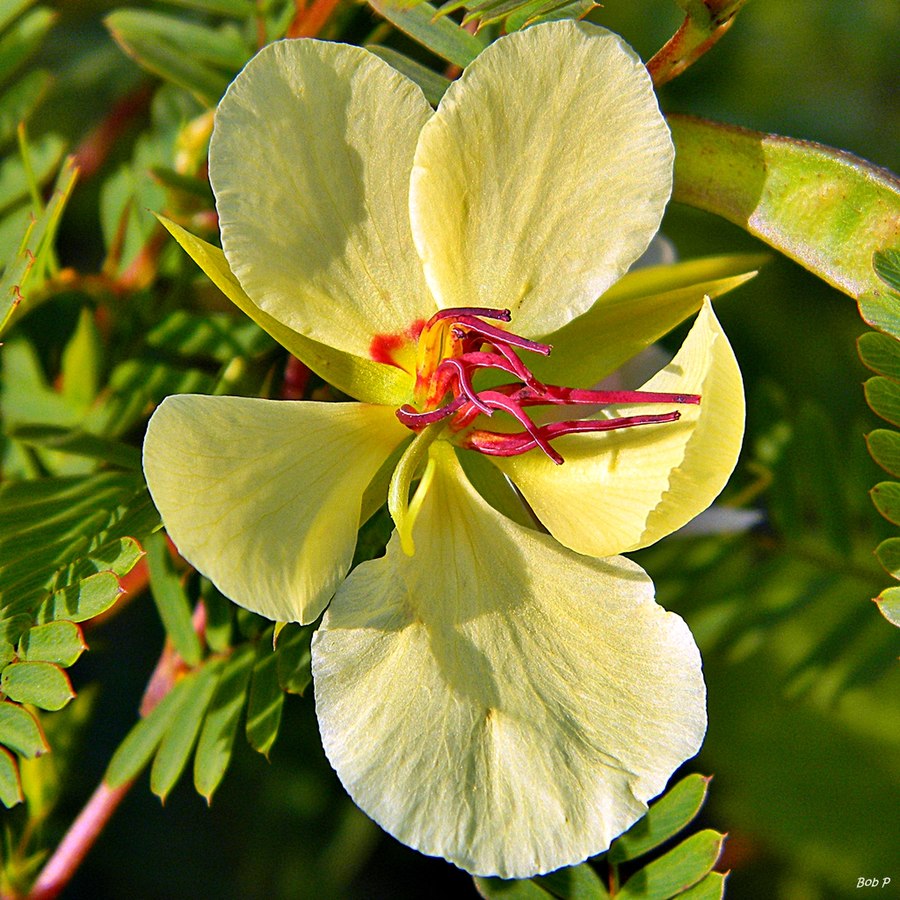
Also known as prairie senna, golden cassia, large-flowered sensitive pea, sleeping plant, and locust weed, this herbaceous annual is native to eastern North America and provides cover and food for wildlife while improving the soil and adding color to the garden in summer. The plants grow 1-3′ tall from a short taproot and are erect if short but sprawl if tall. The feathery leaves are carried on petioles with nectaries that attract several insects including sweat bees, flies, wasps and ants. The leaves fold up in the evening or when touched. The yellow flowers appear in summer and are accented with red. They are pollinated by long-tongued bees such as bumblebees, honey bees, long-horned bees, and leafcutting bees but are also a good food source for butterflies. The fruit is a flat green pod that explosively expels the seeds inside. The seeds are eaten by field mice, and both song and game birds. The plants provide cover for wildlife, browse for deer, and serve as a larval host to the sulfur butterfly. Partridge pea, like other legumes, fixes nitrogen in the soil and is valued for erosion control, and soil reclamation and stabilization. It is also grown for honey and as an ornamental in informal gardens such as meadow, prairie, wildlife, butterfly, or native plant gardens.
Type: Herbaceous annual
Height: 1-3′
Bloom Color: Yellow with red accents
Bloom Time: Summer
Light: Full sun; tolerates some shade
Soil: Average to lean, dry to moist, well-drained
Hardiness: Zones 3-9
Photo Credit Bob Peterson Wikimedia Commons
.